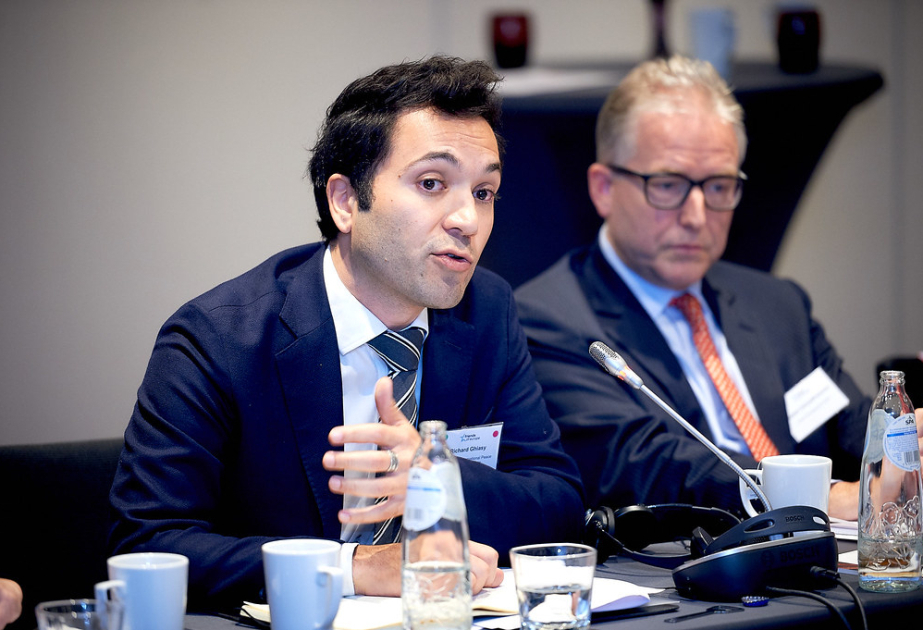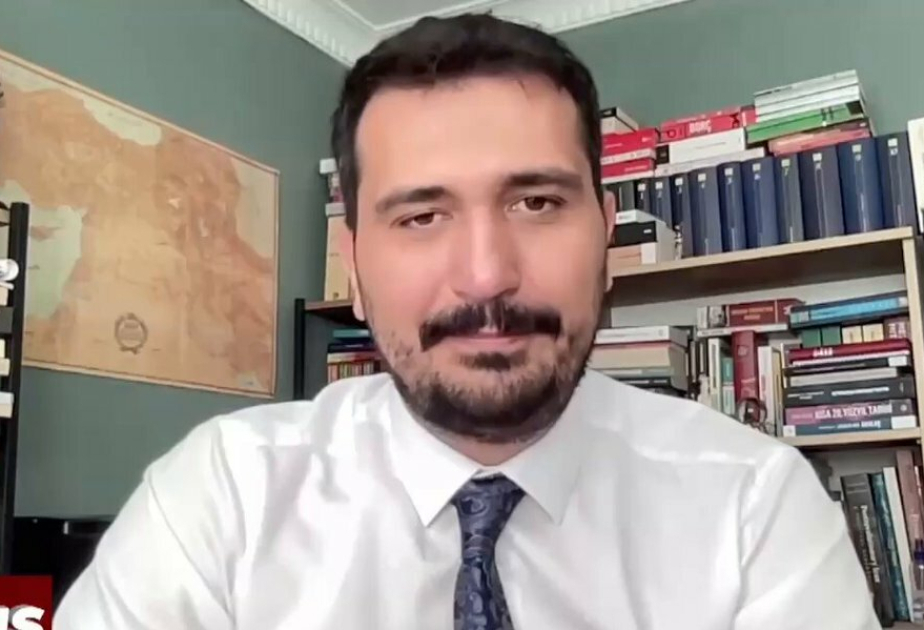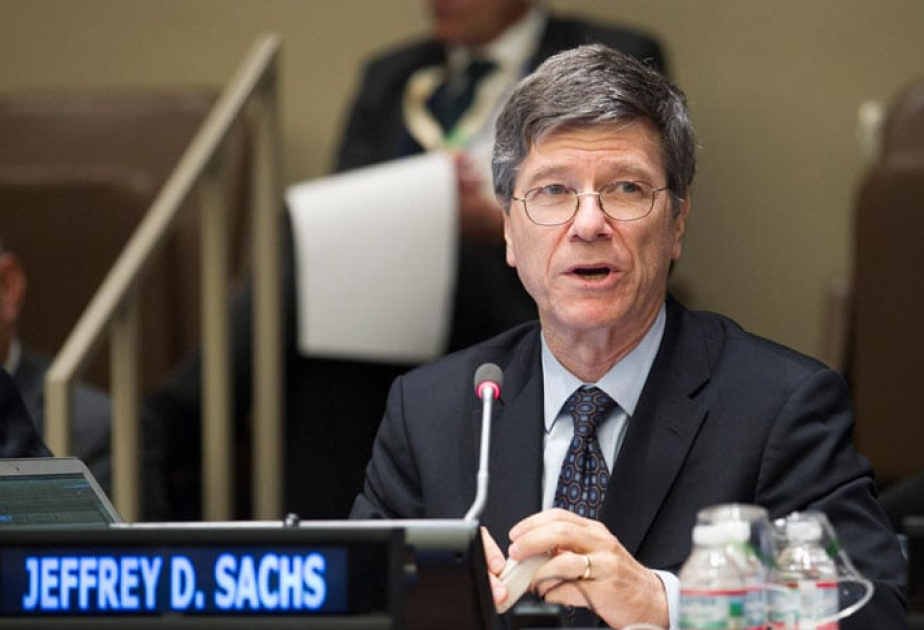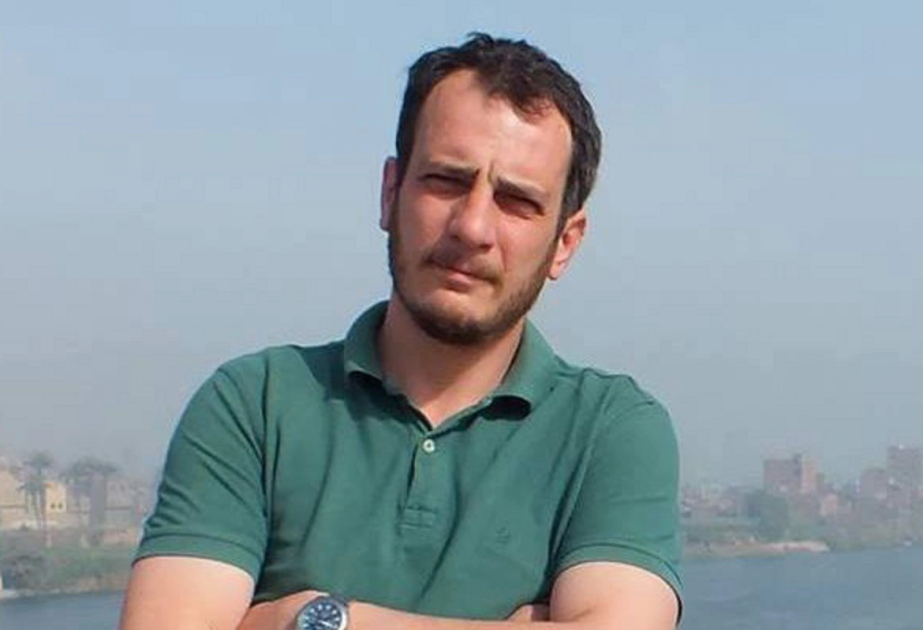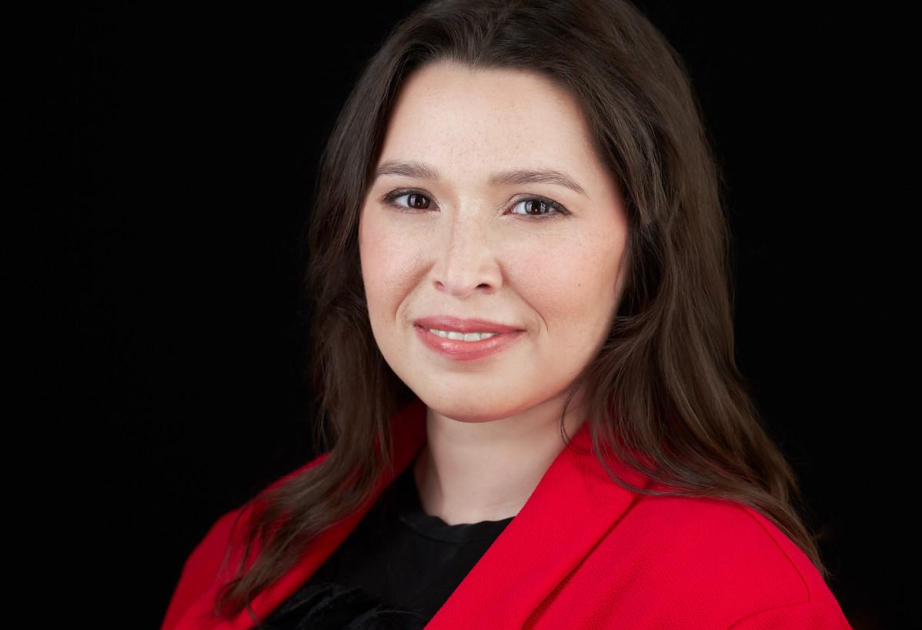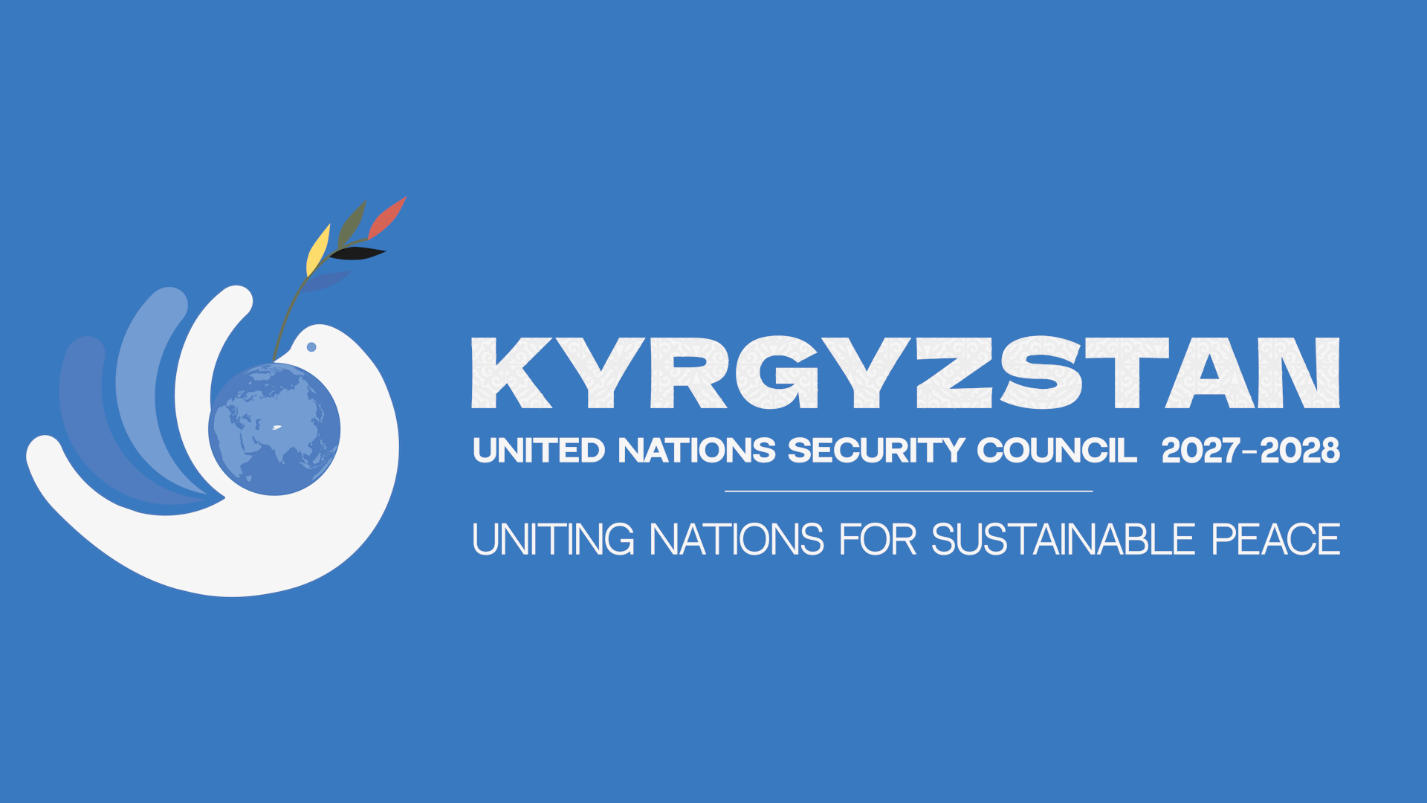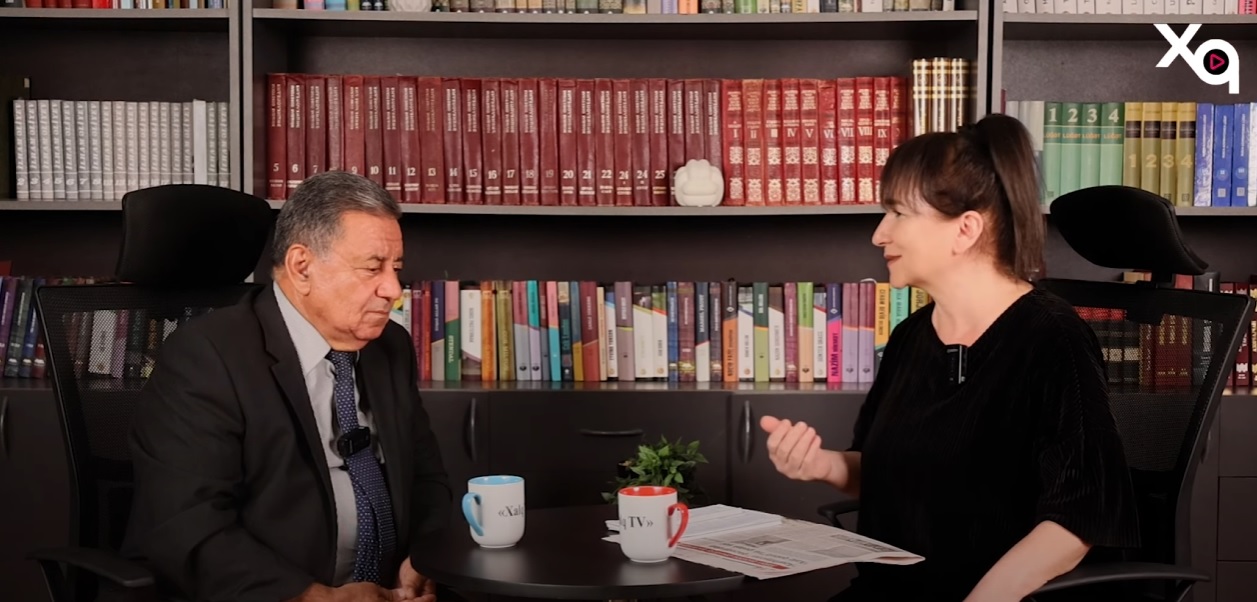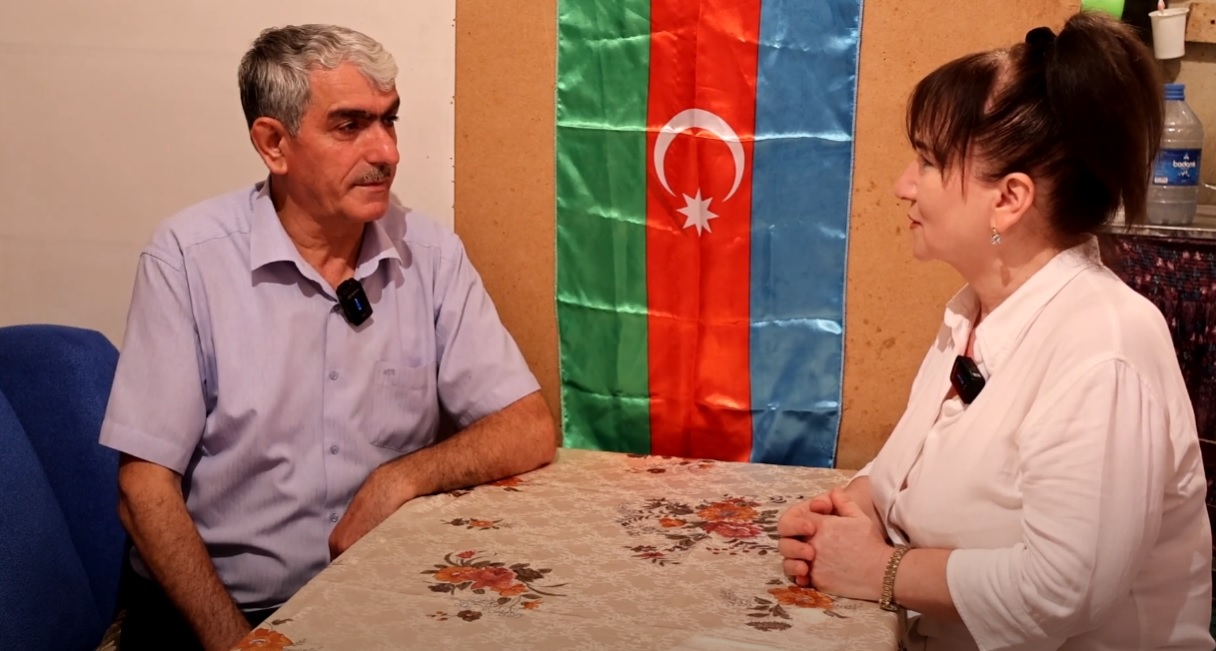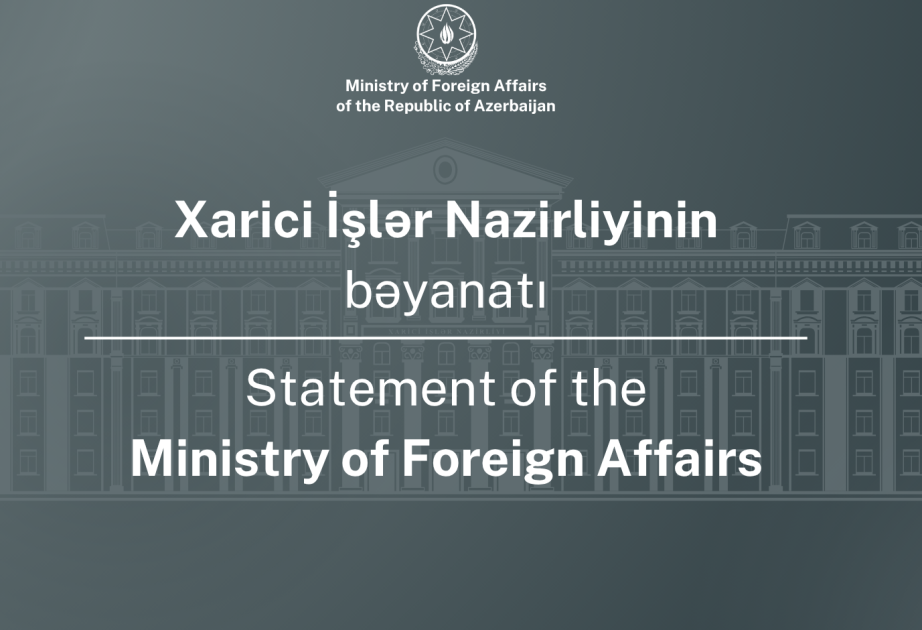AZERTAC presents an interview with Richard Ghiasy, an expert in Asian geopolitics and regional security, and the Director of GeoStrat — an independent geopolitical consultancy and academy based in the Netherlands.
- How would you characterize the current environmental and sustainability challenges facing the South Caucasus, and what role does Azerbaijan play in this?
- The South Caucasus is a stunning region—and like so many regions under environmental strain. Across Armenia, Georgia, and Azerbaijan, the same patterns persist: soils worn thin by overgrazing, forests retreating, and relatively rapid urbanization. Climate change is adding urgency—warmer summers, erratic rainfall, shrinking glaciers across the Caucasus mountains, and increasing floods, mudslides, and droughts threaten lives and livelihoods. According to the UNEP Caucasus Environment Outlook II (2024), much of the region is grappling with erosion and land degradation that directly impacts food security and water access.
Azerbaijan sits at the heart of this dynamic. Its energy-driven growth created jobs and wealth, but unfortunately, it also led to environmental “hotspots” and elevated emissions. Still, recent actions signal a shift: tightening legal frameworks, expanding protected areas, and launching the 2011 International Dialogue for Environmental Action (IDEA), which brings together youth, NGOs, and governments around biodiversity and eco-education. With its economic reach and institutional strength, Azerbaijan has real capacity—and perhaps responsibility—to help steer the South Caucasus toward sustainability and greater inter-country cooperation.
- What key challenges and opportunities do you see in cooperation between the South Caucasus countries in this area?
- Rivers, of course, barely follow borders. The Kura–Aras system is essential for agriculture, cities, and industry across the South Caucasus—so upstream decisions deeply affect downstream neighbors. Key challenges include shifting river flows due to climate variability, cross-border pollution, and the absence of a formal, binding basin commission to manage allocations or quality standards. UNECE has supported cooperation initiatives, but a comprehensive, enforceable framework is still lacking.
On the hopeful side, there’s progress. Armenia and Iran signed that agreement in 2023 to monitor and reduce pollution in the Aras River—a practical example of cooperation amid tension. I believe the region needs:
1. A formal Kura–Aras Commission with binding rules.
2. Joint, science-backed systems for predicting floods and droughts.
3. Grassroots projects—clean irrigation, wastewater treatment, shared monitoring—that build trust and deliver tangible benefits.
Azerbaijan, as a downstream user with strong technical capacity, is well-placed to lead on all fronts.
-What innovative approaches or practices do you consider the most promising for addressing environmental issues in Azerbaijan?
-Three stand-out strategies give me hope. First, “smart reconstruction” in liberated areas—Aghali village in Zangilan is emerging as a pilot: energy-efficient homes, solar power, smart irrigation, and green mobility are all baked into its design. This shows how rebuilding can lead with sustainability, not just utility.
Second, clean transport and efficient buildings. Baku’s introduction of electric buses at COP29, paired with tax reductions on EVs and infrastructure investments, shows that quick progress is possible. Likewise, a new energy-efficiency law is on the books; now the challenge is rolling it out through audits, retrofits, and standards—so people get tuition-saving and comfort-improving results in real time.
Third, grassroots engagement. IDEA’s youth-driven conservation work—from tree planting to leopard protection—gives environmental action a human face. When communities, especially young ones, feel ownership, change tends to stick. Environmentalism is mostly a mindset, a heightened state of awareness of the interconnectivity of existence.
- How do you assess Azerbaijan’s potential for developing wind and solar energy in the context of combating climate change? What key steps have already been taken to stimulate the transition?
- Azerbaijan’s renewable energy potential is enormous — and unusually diverse for such a compact country. Inland and southern regions enjoy world-class sunshine, with 2,400–3,200 hours annually in many districts, while steady winds sweep both the Caspian coast and the mountain passes of the Caucasus Mountains. Offshore, the shallow Caspian shelf offers technical wind potential of around 157 GW, according to the World Bank’s Offshore Wind Roadmap. This is more than ten times the country’s current total installed electricity capacity.
The policy framework is now in place. The Azerbaijani government passed a Renewable Energy Law in 2021 and committed to its updated UN climate pledge to raise renewables to 30% of the power mix by 2030. That pledge is backed by high-profile partnerships with leading global developers. Solar has moved first: Masdar’s 230 MW Garadagh PV plant, inaugurated in 2023, now produces enough electricity for more than 100,000 homes while cutting 200,000 tonnes of CO₂ annually. In wind, ACWA Power’s 240 MW Khizi–Absheron project reached financial close in late 2024 and is expected to be online soon. This is all noteworthy progress.
Next in line are hybrid symbolic-and-strategic projects, such as BP’s 240 MW Shafag solar plant in Jabrayil, designed to help decarbonize the Sangachal oil and gas terminal. Meanwhile, site studies and investor talks are advancing for multi-gigawatt offshore wind in the Caspian.
It’s early days, but the direction is clear: Azerbaijan is beginning to turn its natural advantages into real capacity that can cut emissions, free up gas for export, and diversify the mostly black energy economy to a more green economy.
-In which regions of Azerbaijan are the greatest opportunities for “green” energy concentrated?
-Three zones lead the way in my view. Three areas clearly stand out for renewable energy growth — each with its own strengths and strategic value. Early assessments by the Azerbaijan Renewable Energy Agency indicate multiple gigawatts of untapped capacity. Because much of the infrastructure here is being built from scratch after the 2020 conflict, the grid can be designed with renewables and smart-energy systems integrated from the outset.
Nakhchivan is almost tailor-made for solar. With its semi-arid climate and over 2,800 sunshine hours a year, this landlocked exclave can generate significant daytime power for local consumption, reducing reliance on imported electricity. The compact grid makes integration easier, and ongoing agreements with foreign investors target up to 500 MW of new capacity.
Absheron & the Caspian coast — historically dubbed the “land of winds” — have long, steady coastal gusts and easy access to Baku’s demand center. The Khizi–Absheron wind project is just the start. Offshore, the Caspian’s shallow shelf offers vast space for wind farms with minimal visual impact and close proximity to transmission lines, giving Azerbaijan a prime site for large-scale offshore wind. Together, these regions could anchor a geographically balanced, high-impact renewable energy rollout, delivering clean power across the country while supporting export ambitions.
-How can developing renewable energy affect Azerbaijan’s economy and energy security? Is the country ready to integrate renewables into its infrastructure?
-Expanding renewable energy offers Azerbaijan a rare triple win: economic diversification, stronger energy security, and a sharper climate profile. For decades, the country’s prosperity has leaned heavily on oil and gas exports. By adding large-scale solar, wind, and small hydropower, Azerbaijan can generate new revenue streams while reducing its economic exposure to fossil fuel market swings.
The economic logic is simple: every megawatt-hour of renewable power frees up domestic gas that can be sold abroad or used in higher-value industries like petrochemicals. Government figures suggest that bringing ~2 GW of renewables online by 2027 could save about 1.2 billion cubic metres of gas annually and cut up to 2.5 million tonnes of CO₂ — numbers that are meaningful both for trade balances and for meeting climate targets. These projects also attract foreign capital and create skilled jobs in construction, operations, and maintenance, helping to seed a new green industry base.
On the energy security side, more diverse generation means less dependence on any single fuel source and greater resilience to shocks. Integration readiness is improving: with World Bank support, Azerbaijan is building out new 330/500 kV transmission lines, commissioning the large Navahi substation, and running detailed grid studies to handle variable renewable generation. Battery storage, flexible gas plants, and upgraded control systems are being added to smooth fluctuations. In short, the infrastructure is being put in place now so that a greener power system can grow without risking stability — a deliberate transition that protects both the lights and the livelihoods.
-How do you assess Azerbaijan’s role in promoting the regional environmental agenda, and what unique opportunities does it have for leadership?
-Hosting COP29 in Baku in November 2024 gave Azerbaijan global attention—and regional leverage. The summit spotlighted shared regional challenges, from water stress along the Kura–Aras basin to the urgent need for climate adaptation in mountain and lowland communities of the Caucasus Mountains. By bringing nearly 200 countries to Baku, Azerbaijan demonstrated its convening power and positioned itself as a bridge between regional realities and global climate priorities.
This leadership ambition extends beyond diplomacy. The Black Sea–Caspian Green Energy Corridor — a proposed subsea transmission link from Azerbaijan, via Georgia, to Romania and Hungary — could connect the South Caucasus directly to European electricity markets. If completed, it would not only export Azerbaijani renewables but also align grid standards, regulatory practices, and investment flows among the four countries. It’s climate action as regional integration, a double-win.
Azerbaijan also holds unique structural advantages: financial capacity from its energy exports, a central geographic position between Europe and Asia, and partnerships that range from Gulf investors to the EU and multilateral development banks. These assets allow it to co-fund cross-border projects, seed conservation programs beyond its borders, and lead on setting technical and policy benchmarks.
In short, Azerbaijan has moved from being seen primarily as a hydrocarbon exporter to an emerging environmental convenor — with the ability to make sustainability a shared language of cooperation in a region where trust is often fragile. On a final note, humans are not separate from the interconnected reality of existence, and planet Earth is no exception. The healthier the Earth is, the healthier we will be. The better we understand and practice this, the better off we and posterity will be. I hope that Azerbaijan doubles its efforts, nationally, and regionally.


